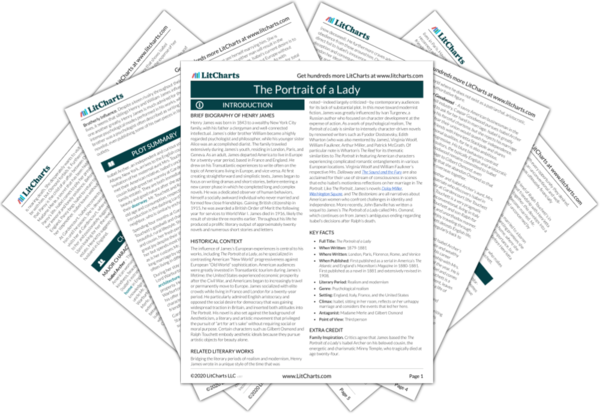James makes few major changes during his edits, as he is likely thrilled at his novel’s critical and financial success;
The Portrait remains one of his most lucrative works. He addresses one of his novel’s shortcomings in acknowledging Henrietta Stackpole’s excessive character traits. In the story readers will come to see that James has painted Stackpole with total self-confidence to wholly associate her with American New World values of candor and enterprise.
